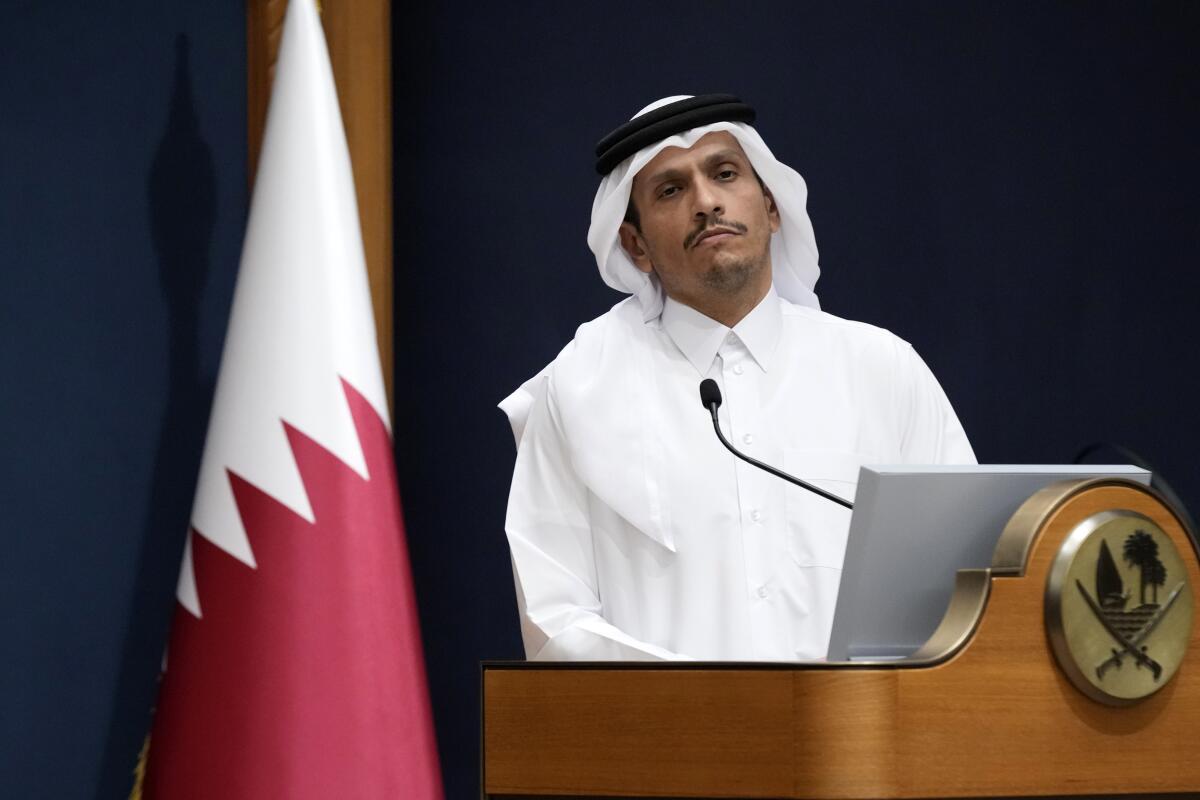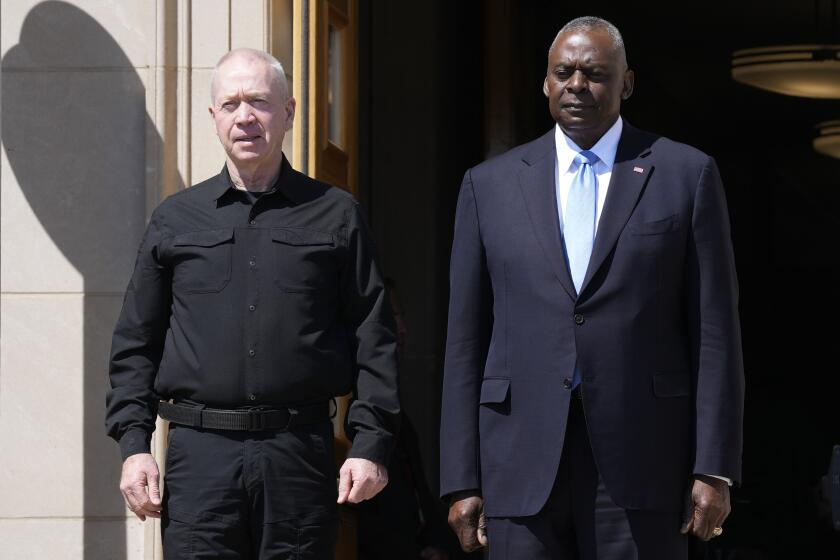Israel and Hamas at odds over cease-fire pact details as international pressure builds

The United Nations Security Council’s unanimous endorsement of a U.S. cease-fire proposal in Gaza has buoyed hopes that the devastating, eight-month-old war might come to an end.
On Tuesday, the militant group Hamas issued its long-awaited, formal response, presenting several amendments to Qatari and Egyptian mediators.
But despite intense urging from the U.S. and other world powers, both Israel and Hamas still seem at odds over what they are willing to agree to — differences that could doom the deal.
The plan — which is similar to one submitted by Hamas weeks ago and was presented by President Biden on May 31 as an Israeli proposal — comprises three phases.
A comparison of Biden and Trump on Mideast policy. The biggest disparity between the two candidates may be their attitude toward Palestinians.
The first phase includes a six-week cease-fire and the release of 33 Israeli hostages, including women, men over age 50 or those who are ill or wounded. For every hostage, Israel would release 30 to 50 Palestinian detainees.
Israeli troops would also withdraw from populated parts of the Gaza Strip, according to the U.N. Security Council resolution, and allow displaced civilians to return home, including to northern Gaza. Humanitarian aid, including food and medicine for Palestinians, would increase significantly.
While the first phase is being implemented, negotiations would continue for the second phase. That would see the full withdrawal of Israel’s military, including from the Rafah crossing and the Philadelphi Corridor between Gaza and Egypt. More hostages and detainees would be exchanged. It would also lead to a permanent cease-fire.
In the third phase, the bodies of hostages who died in Gaza would be returned. A multiyear reconstruction plan for the enclave would commence.
The U.N. resolution rejects any demographic or territorial change in Gaza, “including any actions that reduce” the Palestinian territory. That has been the U.S. position as well. The language differs from a previous draft, which said that any buffer zones created in Gaza would be considered territorial change.
An important detail is that the cease-fire would remain in place between Phase 1 and Phase 2 while negotiations continue, even after the six weeks envisioned in the first phase are over.
Hamas said its proposed amendments were aimed at guaranteeing the complete withdrawal of Israeli forces from all of Gaza. It also sought a firmer timeline for the cease-fire, including a permanent end to the fighting, which according to the U.S. plan is supposed to be implemented during Phase 2, after more negotiations.
European Parliament elections yield victory for centrists, but in France, far-right landslide triggers snap parliamentary elections.
Nevertheless, Hamas insisted both it and Islamic Jihad, another militant group operating in Gaza, “voiced willingness to deal positively” with the negotiations “in order to reach an agreement.”
Hamas leaders remain suspicious that Israel will use an initial acceptance of the proposal to free Israeli hostages being held by the militants — a stipulation in the first phase of the deal — and then renege on the rest of the deal and resume its military campaign.
Despite U.S. assurances to the contrary, it remains unclear whether Israel has accepted the deal.
Israeli Prime Minister Benjamin Netanyahu has not publicly endorsed it, repeatedly ruling out a permanent cease-fire or a withdrawal from Gaza until Israel’s goals — the destruction of Hamas, both militarily and as a governing entity — are fulfilled. Full withdrawal is a step that is supposed to be part of negotiations.
Netanyahu is also facing dissent within his government that could jeopardize the chances of a deal. His political fortunes became more tenuous this week after the Israeli centrist politician Benny Gantz left the government in protest over Netanyahu’s conduct of the war and refusal to publicly endorse the cease-fire plan.
The departure of Gantz, a former defense minister and one of the few members of Netanyahu’s government widely respected by the Biden administration, leaves the Israeli prime minister even more beholden to the most radical right-wing elements in his coalition: National Security Minister Itamar Ben-Gvir and Bezalel Smotrich, the finance minister.
The two have outsized sway over control of the Israeli occupation of the West Bank. Both favor annexation of land claimed by Palestinians, including Gaza, and the forced removal of some Palestinians. Gantz’s presence kept some of those moves at bay.
On Wednesday, U.S. Secretary of State Antony J. Blinken criticized Hamas, saying that it took too long to respond and that some of the group’s “numerous changes” were “workable,” while others were not.
“Hamas could have answered with a single word: yes,” Blinken said in a news conference in the Qatari capital, Doha, with Qatari Prime Minister Sheikh Mohammed bin Abdulrahman al Thani. “Instead, Hamas waited nearly two weeks and requested numerous changes.”
“The time for decision is now,” Blinken said. “The longer this goes on, the more people will suffer.”
Blinken is making his eighth trip to the region since the war began, shuttling to capitals to push for the release of hostages, more humanitarian aid and a cease-fire, and in a largely unsuccessful attempt to urge Israel to minimize civilian casualties in its bombardments of Gaza.
More than 36,000 Gazans have been killed in the war, according to Palestinian figures. About 1,200 Israelis were killed during the Oct. 7 Hamas attack in southern Israel.
Mohammed, the Qatari prime minister, said that pressure would have to be exerted on both Hamas and Israel to accept the proposal.
“It is frustrating, lots of times. We have seen the behavior from both parties on different occasions being counterproductive to the efforts,” he said, emphasizing that the primary aim was for a permanent solution, including the establishment of an independent Palestinian state alongside Israel.
“What we are aiming for is one specific goal is to end the war, to end the suffering of the people, to get the hostages back. And then we will think about the day after.”
Bulos reported from Amman and Wilkinson from Washington.
More to Read
Get the L.A. Times Politics newsletter
Deeply reported insights into legislation, politics and policy from Sacramento, Washington and beyond. In your inbox three times per week.
You may occasionally receive promotional content from the Los Angeles Times.










